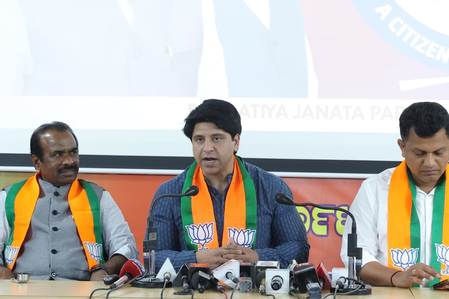Without deeper structural changes, circular debt plan could end up as another costly rerun of past bailouts
By Nasir Jamal
Copyright dawn

The government’s Rs1.225 trillion syndicated financing deal with 18 banks — the largest in Pakistan’s history — is being trumpeted as a landmark move to ease the power sector’s crippling circular debt. Tied to an existing surcharge on electricity bills, the cashflow-backed plan is touted as a step towards fiscal stability and energy sector reform. Yet critics and supporters warn that, without deeper structural changes, it could end up as just another costly rerun of past bailouts.
Under the deal, the government will use Rs565 billion in fresh financing to settle its unpaid dues to power producers while restructuring older loans worth Rs660bn, previously contracted at Kibor plus 2.5–4 per cent and parked with Power Holding Limited, a shell subsidiary of the power ministry. The six-year repayment will be made through the existing Rs3.23 per unit debt servicing surcharge on electricity bills. The government has already amended the National Electric Power Regulatory Authority Act through the Finance Bill 2025-26 to scrap a cap that had restricted such surcharges to 10pc of the base tariff.
The power sector’s circular debt — a recurring cycle of unpaid financial obligations across the energy supply chain — remains one of Pakistan’s most intractable challenges, undermining macroeconomic and fiscal stability. Its ripple effects extend to growth, inflation, the external account, and the financial sector. As of July 2025, the debt stood at Rs1.661tr. It rose by Rs47bn in just one month during July.
According to power minister Awais Khan Leghari, circular debt was reduced from Rs2.393tr last fiscal year by creating Rs780bn in fiscal space: Rs242bn through lower theft, system losses and better recoveries; Rs175bn from falling interest rates; and Rs363bn via revised power purchase agreements with Independent Power Producers, excluding Chinese and government-to-government projects under the Chine-Pakistan Economic Corridor (CPEC). Officials also claim the latest deal will save consumers Rs377bn in late payment charges.
The earlier the debt is settled, the sooner the surcharge disappears and the quicker electricity prices decline
The fresh attempt to retire the so-called circular debt recalls a similar exercise in 2013, when the government injected Rs480bn to clear the sector’s outstanding dues. Since then, successive efforts to address the problem — largely through repeated tariff hikes or sporadic bailout and subsidy packages — have failed to deliver desired results, primarily because the underlying structural weaknesses and inefficiencies of the power sector have remained unaddressed.
The new financing arrangement is expected to generate significant savings for the government on markup payments, as banks have agreed to take a considerable hit on their earnings by accepting a floating rate set at Kibor minus 90 basis points — roughly 150 bps below the rate at which the loans are currently booked.
In addition, sovereign guarantees on both the restructured loans and the fresh financing have been withdrawn, while an effective cap has been imposed on the interest rate, limiting the government’s mark-up liability strictly to the amount recovered through the Rs3.23 per unit Debt Service Surcharge (DSS). In yet another concession, the banks have also agreed to forgo the usual requirement of a floor on the interest rate, which typically accompanies a cap, thereby offering even more favourable terms to the government.
A key feature of the facility is its structure, which allows the loan to be repaid ahead of the envisaged six-year schedule if interest rates fall further and grid electricity consumption increases. Should the plan unfold as anticipated, Mr Leghari says, consumers could benefit from the removal of the DSS, resulting in as much as a 10pc reduction in electricity tariffs. In essence, the earlier the debt is settled, the sooner the surcharge disappears and the quicker electricity prices decline. On the other hand, if borrowing costs rise and/or power consumption dips from current levels, the existing surcharge on consumer bills would need to be increased to ensure timely repayment of the loans.
Pakistan Banks’ Association (PBA) chairman Zafar Masud described the initiative as a potential turning point for both the energy sector and the broader economy. “This deal proves that when interests align, execution becomes far easier. For banks, it means long-outstanding power-sector loans of Rs660bn will finally be repaid through the dedicated DSS stream. For consumers, there is no additional burden, while both old and new debt can be settled within four to six years, depending on the trajectory of interest rates.
“It is also a win for the government, as the sovereign guarantee freed up after the debt settlement can now be redirected towards priority sector financing in agriculture, SMEs, low-cost housing, and impact initiatives in education and health. Moreover, the transaction has enabled the government to secure better terms with power companies, resulting in savings of at least Rs1.1tr in late payment surcharges and penalties, a substantial relief for the public exchequer.”
Despite the positive spin, many fear that circular debt will continue to accumulate, forcing the government into another such exercise — or direct fiscal injections from taxpayers — within a few years. “We have travelled this path before. In 2013, the PML-N government wiped out the outstanding circular debt, but it soon resurfaced because the fundamental problems were left unresolved,” an energy sector expert cautioned.
In recent weeks, both the Washington-based Institute of International Finance (IIF) and the Federation of Pakistan Chambers of Commerce and Industry have warned that such loans and fiscal injections are unsustainable in the absence of far-reaching structural reforms. Without cutting system losses, improving recoveries, and tackling the sector’s deep inefficiencies, they argue, Pakistan will find itself back in the same crisis cycle.
Another risk stems from the power sector’s exposure to exchange rate volatility, as acknowledged by the minister at his Friday press conference. “The power sector will remain exposed to exchange rate volatility for up to eight years because of dollar-indexed investments, especially those tied to Chinese projects. Power plants commissioned after 2015, mostly under CPEC, with a combined generation capacity of over 11,000 MW were financed in dollars and remain highly vulnerable to currency depreciation,” he noted.
The government has, to its credit, initiated some measures aimed at curbing leakages, strengthening governance, enforcing cash flow discipline, and ring-fencing funds to ensure sector debt is serviced. A key step in this regard has been the decision to channel the debt servicing surcharge exclusively towards repayment of sector liabilities, rather than allowing it to vanish into the general revenue pool.
According to the PBA chairman, “This time the reforms go beyond ad hoc bailouts. There is now a growing emphasis on plugging systemic leakages, ensuring timely payments throughout the supply chain, and rethinking the subsidy framework so that support reaches the most vulnerable without disrupting the entire revenue cycle.”
Yet he struck a note of caution: “The key challenge is to stop new flows from building up in the future.”
Published in Dawn, The Business and Finance Weekly, September 29th, 2025



